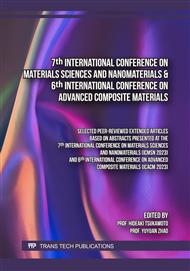p.3
p.11
p.17
p.23
p.31
p.37
p.45
p.59
Machine Learning-Based Research for Material Property Analysis and Prediction of UHPC/CNT Composites
Abstract:
This paper aims to research and predict the expression of formability and compressive strength using machine learning (ML) technology for the composite materials manufactured by mixing CNTs with UHPC. To this end, numerical data of two material properties were collected through related experiments and literature data from a mixing ratio of 0 to 1% manufactured by mixing CNTs with UHPC. Afterwards, in order to predict the material properties of UHPC/CNT composite with various mixing ratios that have not been experimented and studied, the material properties were predicted using ML techniques, k-NN regression and decision tree method based on the collected data. As a result, data analysis with collecting similar kind of research and experimental data, it was confirmed that the formability significantly decreased when the CNTs mixing ratio was 0.4% or more. Also, compressive strengths in the detailed mixing ratio period from 0 to 1% could be predicted. This suggests that the properties of newly developed building materials through this study can be identified with high reliability using ML techniques.
Info:
Periodical:
Pages:
23-28
Citation:
Online since:
December 2023
Authors:
Price:
Сopyright:
© 2023 Trans Tech Publications Ltd. All Rights Reserved
Share:
Citation:



